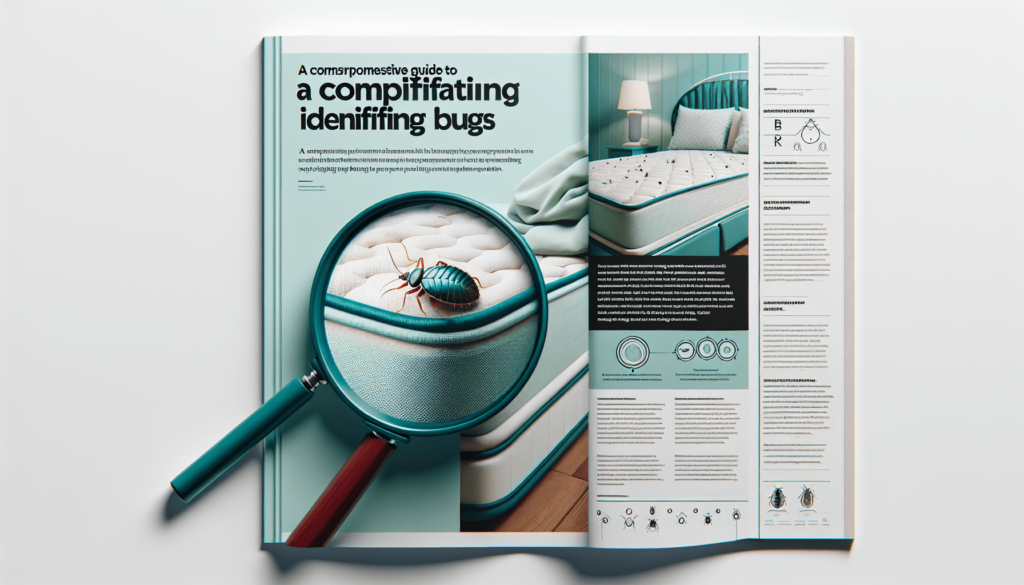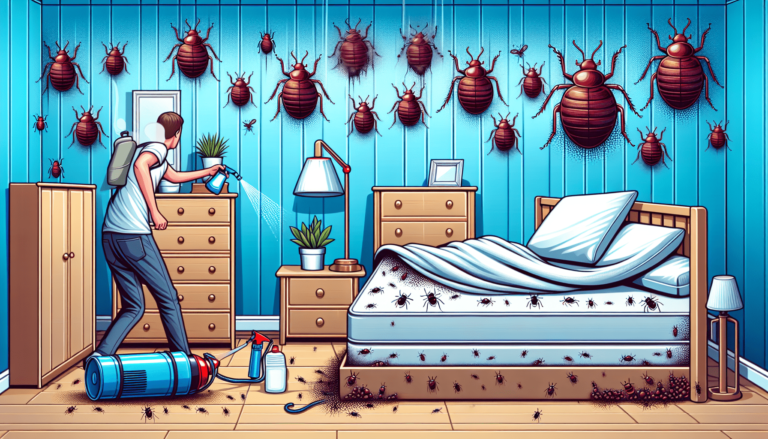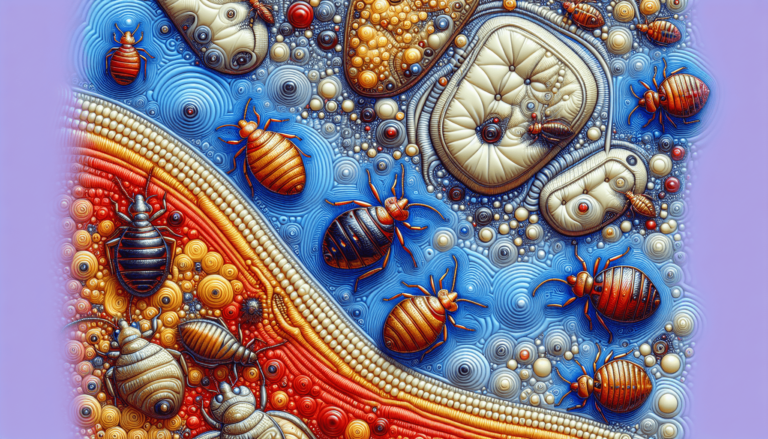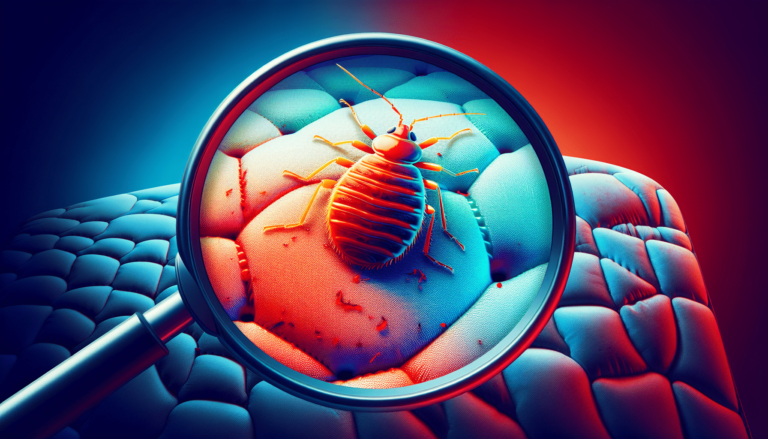How to Identify Bed Bugs: A Comprehensive Guide
This comprehensive guide will equip you with the knowledge and skills to identify bed bugs effectively. As a subject expert with a lifetime of experience in dealing with these pests, I will provide you with valuable information, actionable tips, and real-life examples to help you identify bed bugs with ease. This article is designed for homeowners, hotel staff, and anyone concerned about potential bed bug infestations. By the end of this article, you will have the expertise to recognize the appearance and signs of bed bugs, empowering you to take appropriate measures to protect your home or business. So, let’s delve into the world of bed bugs and understand how they look like, their behavior, and the tell-tale signs of their presence.

Understanding What Bed Bugs Are
Bed bugs are small parasitic insects that feed on the blood of humans and animals. They belong to the scientific classification of Cimex lectularius and are part of the family Cimicidae. There are different types of bed bugs, including Cimex hemipterus and Leptocimex boueti. These insects have been a nuisance to humans for centuries and can be found all over the world.
Identifying Bed Bugs
To identify bed bugs, it is important to know what they look like. Adult bed bugs are small, flat, and oval-shaped, ranging in size from 4 to 5 millimeters. They have six legs and are reddish-brown in color. Bed bugs have a distinct shape with a broad head and a narrower abdomen. They can move quickly and easily navigate through cracks and crevices.
Life Cycle of Bed Bugs
The life cycle of bed bugs starts with eggs, which are small and white, about 1 millimeter long. These eggs hatch into baby bed bugs, also known as nymphs. Nymphs are pale in color and similar in shape to adult bed bugs, but smaller. They go through several molts before reaching adulthood. Adult bed bugs are fully grown and capable of reproduction. The lifespan of a bed bug can vary depending on environmental conditions, but on average, they can live for several months to a year.
Bed Bug Bites
Bed bug bites can be identified by their appearance. They often appear as small, red, itchy welts on the skin, usually in a line or cluster. The symptoms of bed bug bites can vary from person to person, but they typically include itching, swelling, and a localized rash. It is important to note that bed bug bites can often be mistaken for other insect bites, such as mosquito or flea bites. Allergies and complications from bed bug bites are rare, but they can occur in some individuals.

Hiding Places of Bed Bugs
Bed bugs are notorious for their ability to hide in various places. Common hiding spots include mattress seams, box springs, bed frames, headboards, and other furniture near sleeping areas. They can also hide in cracks and crevices in walls, baseboards, and even electrical outlets. When a room is infested with bed bugs, they can spread out and infest multiple areas, making it difficult to eradicate them. Signs of bed bug infestation include the presence of live bugs, shed skin, fecal stains, and blood stains on bedding or furniture.
Difference Between Bed Bugs and Other Common Pests
It is important to distinguish bed bugs from other common pests. Bed bugs are often mistaken for fleas, as they both bite humans and animals. However, there are key differences between the two. Bed bugs are larger in size, have a flat, oval-shaped body, and do not have wings. Fleas are smaller and have a more compact body with long hind legs for jumping. Bed bugs are also commonly mistaken for dust mites, which are microscopic organisms that feed on dead skin cells and thrive in humid environments. Ticks and lice are other blood-feeding pests that differ from bed bugs in terms of appearance and behavior.
Preventing Bed Bugs Infestation
To prevent bed bug infestation, there are several tips to keep in mind. When traveling, inspect hotel rooms for signs of bed bugs, such as live bugs or fecal stains. Avoid placing luggage on beds or upholstered furniture. When purchasing second-hand furniture, thoroughly inspect it for any signs of bed bugs before bringing it into your home. Regular cleaning and maintenance of your living space can also help prevent bed bugs. Vacuum mattresses, furniture, and cracks regularly, and wash bedding and clothing at high temperatures if you suspect bed bug activity. If you suspect a bed bug infestation, it is advisable to seek professional help for effective eradication.
Treating Bed Bug Bites
For relief from bed bug bites, there are several home remedies you can try. Applying a cold compress to the affected area can help reduce itching and swelling. Over-the-counter creams or ointments containing hydrocortisone or calamine can also provide relief. If the symptoms persist or worsen, it is advisable to seek medical help. In some cases, prescription medications such as antihistamines or corticosteroids may be prescribed to alleviate symptoms. When treating bed bug bites in children or the elderly, extra care should be taken to ensure their comfort and safety.
Eradicating Bed Bugs
When faced with a bed bug infestation, there are both do-it-yourself methods and professional pest control options available. DIY methods for bed bug eradication include thorough cleaning, vacuuming, and washing infested items in hot water. Additionally, using mattress encasements and sealing cracks and crevices can help prevent the spread of bed bugs. However, for severe or persistent infestations, it is recommended to seek professional help. Pest control professionals have the knowledge, experience, and tools to effectively eliminate bed bugs. It is important to follow safety measures during bed bug treatment to protect yourself and your environment.
Myths and Misconceptions about Bed Bugs
There are several common myths and misconceptions about bed bugs that need to be addressed. One misconception is that bed bugs only infest dirty environments. In reality, bed bugs can be found in clean and well-maintained spaces as they are attracted to the presence of humans and their blood. Another myth is that bed bugs are only found in beds. While they are commonly found in mattresses and bedding, they can also infest other furniture, cracks, and crevices. It is important to understand the reality of bed bug infestation and not rely on misinformation when dealing with these pests.
In conclusion, understanding bed bugs is crucial in order to identify, prevent, and treat infestations. By familiarizing yourself with their appearance, behavior, and hiding places, you can effectively combat bed bug problems. Taking preventive measures, seeking professional help when needed, and debunking myths surrounding bed bugs are all essential steps in maintaining a bed bug-free environment. Remember to always prioritize your safety and well-being when dealing with bed bugs.





